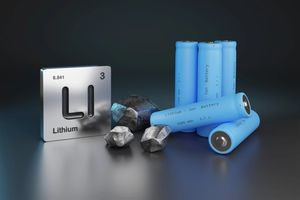-- Rett syndrome research to include oral presentation of Phase 3 Lavender trial and poster presentation highlighting the patient journey and clinical burden of the disease
-- E-poster presentation evaluating maintenance of efficacy and safety of pimavanserin among patients with Parkinson’s disease dementia with psychosis
Acadia Pharmaceuticals Inc. (Nasdaq: ACAD) today announced a late-breaking oral presentation on the efficacy and safety data from the Phase 3 Lavender study of trofinetide, an investigational treatment for Rett syndrome (RTT), will be presented at the 2022 American Academy of Neurology Annual Meeting (AAN), held in Seattle, WA, April 2-7, and virtually April 24-26, 2022.
“We look forward to the upcoming presentation of the Phase 3 Lavender results at this year’s AAN and the opportunity to educate neurologists on the critical unmet need that exists for patients and their caregivers living with this rare and serious neurological disease,” said Kathie Bishop, Ph.D., Acadia’s Senior Vice President, Chief Scientific Officer and Head of Rare Disease.
AAN Accepted Presentations and Posters:
Emerging Science (Late-Breaker):
-
Oral Presentation: Efficacy and safety of trofinetide for the treatment of Rett syndrome: results from the pivotal phase 3 Lavender study.
Tuesday, April 5, from 9:15 a.m. - 11:30 a.m.
Posters:
-
Poster # 001: Patient journey and clinical burden of Rett syndrome in the United States: research study including nearly 6,000 girls provides an overview of the patient journey and clinical burden of RTT with respect to baseline characteristics, clinical manifestations and treatment patterns among female individuals in the US.
Tuesday, April 5, from 11:45 a.m. - 12:45 p.m.
-
E-Poster # P1.006: Pimavanserin treatment of hallucinations and delusions in patients with Parkinson’s disease dementia: post hoc analysis of the Phase 3 HARMONY clinical trial. Analysis evaluating the maintenance of efficacy, as measured by time to relapse, of pimavanserin in a subgroup of patients with Parkinson’s disease dementia with psychosis during the 26-week maintenance phase of the HARMONY clinical trial.
Virtual American Academy of Neurology Annual Meeting, April 24-26.
About Rett Syndrome
Rett syndrome is a rare, debilitating neurological disorder that occurs primarily in females following apparently normal development for the first six months of life. Rett syndrome is often misdiagnosed as autism, cerebral palsy, or non-specific developmental delay. Rett syndrome is caused by mutations on the X chromosome on a gene called MECP2. There are more than 200 different mutations found on the MECP2 gene that interfere with its ability to generate a normal gene product. Rett syndrome occurs worldwide in approximately one of every 10,000 to 15,000 female births and in the United States impacts 6,000 to 9,000 patients. Rett syndrome causes problems in brain function that are responsible for cognitive, sensory, emotional, motor and autonomic function. Typically, with symptoms presenting between six to 18 months of age, patients experience a period of rapid decline with loss of purposeful hand use (fine motor skills), development of hand stereotypies, absent or impaired mobility (gross motor skills), loss of communication skills (including eye contact) and inability to independently conduct activities of daily living. Symptoms also include seizures, disorganized breathing patterns, an abnormal side-to-side curvature of the spine (scoliosis), and sleep disturbances. Currently, there are no FDA-approved medicines for the treatment of Rett syndrome.
About Trofinetide
Trofinetide is an investigational drug. It is a novel synthetic analog of the amino‐terminal tripeptide of IGF-1 designed to treat the core symptoms of Rett syndrome by potentially reducing neuroinflammation and supporting synaptic function. Trofinetide is thought to stimulate synaptic maturation and overcome the synaptic and neuronal immaturities that are characteristic of Rett syndrome pathophysiology. In the central nervous system, IGF-1 is produced by both of the major types of brain cells – neurons and glia. IGF-1 in the brain is critical for both normal development and for response to injury and disease. Trofinetide has been shown to inhibit the production of inflammatory cytokines, inhibit the overactivation of microglia and astrocytes, and increase the amount of available IGF-1 that can bind to IGF-1 receptors. Trofinetide has been granted Fast Track Status and Orphan Drug Designation for Rett syndrome and has also been granted Rare Pediatric Disease (RPD) designation by the FDA.
About Parkinson’s Disease and Parkinson’s Disease Psychosis
Parkinson’s disease is a progressive nervous system disorder that affects about one million people in the United States.1,2 The signs and symptoms can vary with people experiencing both motor symptoms and non-motor symptoms such as hallucinations (seeing, hearing, or experiencing things that others don’t) and delusions (false beliefs).3,4 Physicians may refer to these Parkinson’s-related hallucinations and delusions as Parkinson’s disease psychosis.4 Around 50 percent of people living with Parkinson’s may experience hallucinations or delusions during the course of their disease.3 Non-motor symptoms, as a whole, can be more troublesome than motor symptoms, in terms of quality of life.5 Parkinson’s disease psychosis may add to the burden of caring for a loved one with Parkinson’s disease.6,7
About Pimavanserin
Pimavanserin is a selective serotonin inverse agonist and antagonist preferentially targeting 5-HT2A receptors. These receptors are thought to play an important role in neuropsychiatric disorders. In vitro, pimavanserin demonstrated no appreciable binding affinity for dopamine (including D2), histamine, muscarinic, or adrenergic receptors. Pimavanserin was approved for the treatment of hallucinations and delusions associated with Parkinson’s disease psychosis by the U.S. Food and Drug Administration in April 2016 under the trade name NUPLAZID®. NUPLAZID is not approved for Alzheimer’s disease psychosis. In addition, Acadia is developing pimavanserin in other neuropsychiatric conditions.
About Acadia Pharmaceuticals
Acadia is advancing breakthroughs in neuroscience to elevate life. For more than 25 years we have been working at the forefront of healthcare to bring vital solutions to people who need them most. We developed and commercialized the first and only approved therapy for hallucinations and delusions associated with Parkinson’s disease psychosis. Our late-stage development efforts are focused on treating psychosis in patients with dementia, the negative symptoms of schizophrenia and Rett syndrome. Our early-stage development efforts are focused on novel approaches to pain management, cognition and neuropsychiatric symptoms in central nervous system disorders. For more information, visit us at www.acadia-pharm.com and follow us on LinkedIn and Twitter.
Important Safety Information and Indication for NUPLAZID® (pimavanserin)
Indication
NUPLAZID is indicated for the treatment of hallucinations and delusions associated with Parkinson’s disease psychosis.
Important Safety Information
WARNING: INCREASED MORTALITY IN ELDERLY PATIENTS WITH DEMENTIA-RELATED PSYCHOSIS
- Elderly patients with dementia-related psychosis treated with antipsychotic drugs are at an increased risk of death.
- NUPLAZID is not approved for the treatment of patients with dementia-related psychosis unrelated to the hallucinations and delusions associated with Parkinson’s disease psychosis.
Contraindication: NUPLAZID is contraindicated in patients with a history of a hypersensitivity reaction to pimavanserin or any of its components. Rash, urticaria, and reactions consistent with angioedema (e.g., tongue swelling, circumoral edema, throat tightness, and dyspnea) have been reported.
Warnings and Precautions: QT Interval Prolongation
-
NUPLAZID prolongs the QT interval. The use of NUPLAZID should be avoided in patients with known QT prolongation or in combination with other drugs known to prolong QT interval including Class 1A antiarrhythmics or Class 3 antiarrhythmics, certain antipsychotic medications, and certain antibiotics.
- NUPLAZID should also be avoided in patients with a history of cardiac arrhythmias, as well as other circumstances that may increase the risk of the occurrence of torsade de pointes and/or sudden death, including symptomatic bradycardia, hypokalemia or hypomagnesemia, and presence of congenital prolongation of the QT interval.
Adverse Reactions: The common adverse reactions (≥2% for NUPLAZID and greater than placebo) were peripheral edema (7% vs 2%), nausea (7% vs 4%), confusional state (6% vs 3%), hallucination (5% vs 3%), constipation (4% vs 3%), and gait disturbance (2% vs <1%).
Drug Interactions:
-
Coadministration with strong CYP3A4 inhibitors (e.g., ketoconazole) increases NUPLAZID exposure. Reduce NUPLAZID dose to 10 mg taken orally as one tablet once daily.
- Coadministration with strong or moderate CYP3A4 inducers reduces NUPLAZID exposure. Avoid concomitant use of strong or moderate CYP3A4 inducers with NUPLAZID.
Dosage and Administration
Recommended dose: 34 mg capsule taken orally once daily, without titration.
NUPLAZID is available as 34 mg capsules and 10 mg tablets.
Please read the full Prescribing Information including Boxed WARNING.
Forward-Looking Statements
Statements in this press release that are not strictly historical in nature are forward-looking statements. These statements include but are not limited to statements regarding the timing of future events. These statements are only predictions based on current information and expectations and involve a number of risks and uncertainties. Actual events or results may differ materially from those projected in any of such statements due to various factors, including the risks and uncertainties inherent in drug development, approval and commercialization. For a discussion of these and other factors, please refer to Acadia’s annual report on Form 10-K for the year ended December 31, 2021 as well as Acadia’s subsequent filings with the Securities and Exchange Commission. You are cautioned not to place undue reliance on these forward-looking statements, which speak only as of the date hereof. This caution is made under the safe harbor provisions of the Private Securities Litigation Reform Act of 1995. All forward-looking statements are qualified in their entirety by this cautionary statement and Acadia undertakes no obligation to revise or update this press release to reflect events or circumstances after the date hereof, except as required by law.
References
1Parkinson’s Disease Foundation. What is Parkinson’s disease? Retrieved from https://www.parkinson.org/Understanding-Parkinsons/Statistics. Accessed March 2021.
2Postuma RB, Berg D, Stern M, et al. MDS clinical diagnostic criteria for Parkinson’s disease. Mov Disord. 2015;30(12):1591-1601.
3Forsaa EB, Larsen JP, Wentzel-Larsen T, et al. A 12-year population-based study of psychosis in Parkinson’s disease. Arch Neurol. 2010;67(8):996-1001.
4Ravina B, Marder K, Fernandez HH, et al. Diagnostic criteria for psychosis in Parkinson’s disease: report of an NINDS, NIMH work group. Mov Disord. 2007;22(8):1061-1068.
5Martinez-Martin P, Rodriguez-Blazquez C, et al. The Impact of Non-Motor Symptoms on Health-Related Quality of Life of Patients with Parkinson’s Disease. Mov Disord. 2011;26(3):399-406.
6Schrag A, Hovris A, et al. Caregiver-burden in parkinson’s disease is closely associated with psychiatric symptoms, falls, and disability. Parkinsonism and Related Disorders. 2006;12:35-41.
7Aarsland D, Bronnick K, Ehrt U. et al. Neuropsychiatric symptoms in patients with Parkinson’s disease and dementia: frequency, profile and associated care giver stress. J Neurol Neurosurg Psychiatry. 2007;78:36-42.
View source version on businesswire.com: https://www.businesswire.com/news/home/20220322005339/en/
Contacts
Media Contact:
Acadia Pharmaceuticals Inc.
Deb Kazenelson
(818) 395-3043
media@acadia-pharm.com
Investor Contact:
Acadia Pharmaceuticals Inc.
Mark Johnson, CFA
(858) 261-2771
ir@acadia-pharm.com






